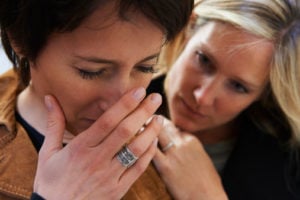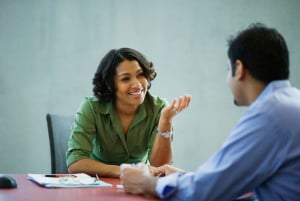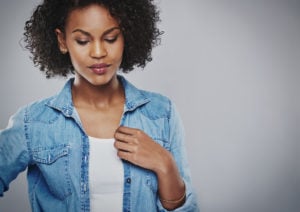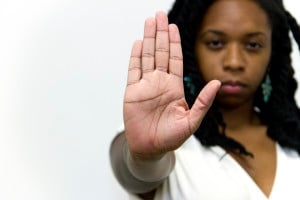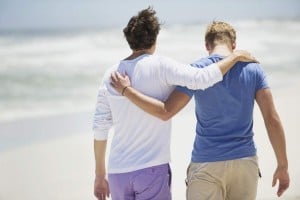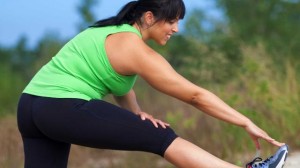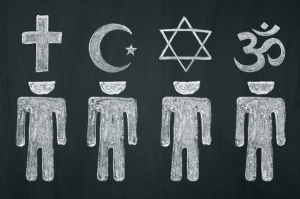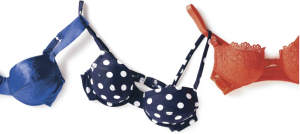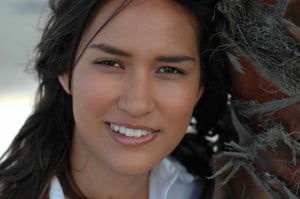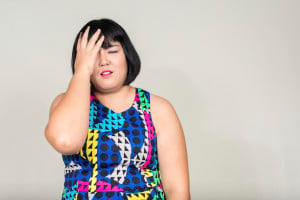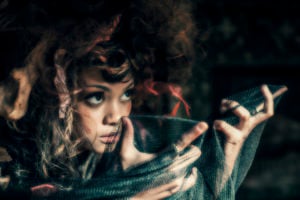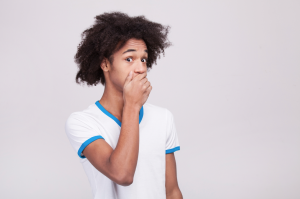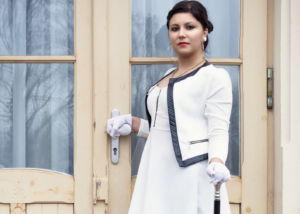
A person in formal attire and white gloves poses by a door, leaning on a walking cane.
This year, I had a pretty specific checklist for my second year of graduate school shopping: notebooks, two textbooks, folders, a new laptop, and a cane.
I’ve been disabled my entire life, but this was my first time using a mobility aid long-term. As a kid, I experimented with canes and crutches (with the help of my physical therapist), but internalized ableism set in and changed my mind. Other kids bullied me for having difficulty walking up and down the stairs, for holding the handrail and taking each step two shaky feet at a time.
Walking with a cane makes my disability visible instead of invisible. As a queer woman, I’m keenly aware of both the importance of, and the danger in, being “out” as a marginalized person. As a femme AFAB, I’m often read as straight by strangers, although I’ve been out as queer in some capacity since I was thirteen.
That is, I get to make the choice, on a daily basis, about whether a situation is safe or unsafe for me to be out as queer. I can read the room before I wear pride jewelry or fashion, or before I make an offhand statement about my girlfriend.
When I’m walking with a cane, disability is usually assumed, unless a stranger reads me as either “faking it” or “temporarily injured” because of the way ableism intersects with my age, thinness, skin color, and physical appearance. I don’t have any choice in whether or not I make myself visible.
Online and in my social circles, I’m also actively choosing to be visibly disabled. What does that mean? On social media, it means sharing photos of me with my cane in them. It means identifying as disabled in some of my bios, or in the essays I write. It means sharing content about disability and explaining why it’s meaningful to me. It means aligning myself with the disability rights movement not as an ally, but as a member of the community.
This is something I’ve participated in as part of the queer community for years now, as someone who’s out and proud. Being visible can be uncomfortable sometimes, and can result in judgment or questions from others.
But it also feels like home. It feels like choosing to radically love myself, and give that love back to the communities I’m in.
Here are the reasons why I’m taking part in much-needed disability visibility, both on and offline, and what that means.
1. Being Visible Adds to Much-Needed Representation
Having representation, whether that’s in the media we consume, the teachers and mentors we encounter, or the community we form with friends, is hugely important.
Growing up, I didn’t know many other physically disabled people. I knew several people with learning disabilities, but nobody else who struggled to run like me, or couldn’t ride a bike or walk a balance beam.
The first time I had a visibly disabled teacher, I was a senior in college. My professor didn’t use a mobility aid, but she was visibly disabled by choice – she made it known to her students what she was dealing with, and that we should come to her with any accommodations we may need.
This wasn’t the first time I felt a professor was fair and accommodating to disabilities, but it was the first time I saw my experiences reflected back at me in the classroom.
It was the first time I could meet with a professor and talk to her about my post-graduate plans and have her totally, completely understand the way I was trying to navigate higher education and the working world as a disabled person.
When I told her I wasn’t sure if I’d be able to handle working full-time after undergrad while pursuing my master’s degree full-time, she got it.
She didn’t, like many well-meaning abled people, tell me to “Just hustle” or imply that we’re all exhausted in our twenties, but that these are the years to push ourselves to our limits.
She understood that, as a disabled person, my limits are different than my abled peers, and that this was part of my reality.
By being out, I’m making disability a part of who I am, and offering myself as a member of the disabled community who gets it. I want to be a safe space as well as a resource.
2. Being Visible Makes It Safer for Others to Be Visible
Because of ableism and ableist media portrayals, a lot of people don’t think that disabled lives are worth living – or they think that disabled people are worthy of either pity (if we don’t fit the means of functioning the person expects) or inspiration (if we fit those means of functioning and, in their mind, have somehow “overcome” or “moved past” our disability).
These are limited ways of thinking, because disability is far more nuanced and complicated than many people think. If you’ve met one disabled person, you’ve only met one disabled person. Our experiences are not identical in any way.
That’s why being visible matters. The more we’re visible, the safer we make it for other disabled people to become visible.
For a long time, I feared visibility because I feared ableism and its effects. I didn’t want to risk being passed up for employment or professional networking because of my disability.
I’m studying for a master’s degree in a field that’s well-known for not being very diverse – publishing – and I didn’t want hiring managers to have one more reason to pass up my applications.
It wasn’t until college that I met a lot more people with physical disabilities. Some of these people used mobility aids, and others didn’t. Some of these people had more than one mobility aid, or were going through the process of deciding whether to start using a new aid. This wasn’t the experience I remembered from being bullied learning how to walk and climb stairs in elementary school.
I felt safer – and that was all because I could form a sense of community and belonging around being disabled.
3. It Makes Disability a Political and Personal Identity to Be Proud Of
Our identities shape us.
While there are so many people who don’t identify as disabled and don’t think it’s an important part of them (the same way some LGBTQIA+ people don’t choose a label), there are also many of us that do.
When you’ve got disabled people being bombarded with media like the book-turned-movie Me Before You, where a disabled wheelchair user decides to end his life rather than live as a quadriplegic, it can be hard to see how disabled could be an identity to be proud of.
A few weeks before I saw Me Before You with a group of abled friends (I don’t recommend it at all), I also met disabled author Leigh Bardugo, who had written a book, Six of Crows, which features several disabled characters. I attended two panels that Leigh was on at BookCon, during which she talked a little about her own experiences as a cane user and the feedback she got from the disabled community.
I can’t say enough how different these two experiences were.
People with marginalized identities are often taught not to take pride in who we are, to hide it rather than to embrace it. It leads to a lot of self-hatred and, in the case of disability, internalized ableism that can take a lifetime to work through.
I sat in a room filled with dozens of other readers and listened as someone I looked up to claimed pride in the fact that she’s disabled, and that her characters are, too. I’ve had that feeling a few times with queer authors and queer writing, but I’d never had it with disability until that moment.
It was the first time that someone I admired from the industry I want to be in spread the message that disability is something to be proud of.
4. It Challenges What People Expect When They Think of Disability
Even as someone who’s been disabled her entire life, I didn’t start using it as a word to describe myself until college.
Claiming disability and being visible about it challenges what we all think of when we think of disability.
Vilissa Thompson started the hashtag #DisabilityTooWhite for exactly this reason – because there isn’t enough representation of disabled people of color.
Diversity is more than just a buzzword. For those of us who are marginalized, it’s our entire lives. This becomes even truer when we talk about intersectional identities and those who fall into more than one marginalized group.
I had no idea there were other queer disabled people until I started actively searching for those voices and communities online.
Being out about disability also forces us to reconsider misconceptions.
Several of my abled friends have made comments that imply they think all wheelchair users are paralyzed and literally can’t walk – or have sex! A lot of people don’t realize that mobility aids, like wheelchairs, canes, crutches, and walkers, aren’t always a last resort if you physically cannot move without them. They can also be used to improve quality of life, prevent injury and strain, and offer support.
When abled people – my loved ones as well as strangers – see me using a cane, or see me choosing to be visible, they’re offered an additional narrative about disability. It allows for a widening of viewpoints.
They may rethink assumptions they’d made about what it means to be disabled. They may be faced with a new perspective that hadn’t occurred to them because we don’t offer adequate or diverse disability representation in pop culture.
Similarly, my visibility can offer a reflection for someone in the disability community. I’d never considered that young people could regularly use canes until I met other younger cane users. I’d never thought about the fact that mobility aids weren’t a literal last resort, but were sometimes used for pain management and quality of life, until a close friend of mine told me about her decision making in getting an electric wheelchair to use in place of her manual one. I hadn’t thought about the fact that there is a community of queer disabled people until I read work by writers like Carrie Wade and Kayla Whaley.
If my visibility offers just one person a new point of view on the disabled experience, whether they’re learning something new or seeing themselves reflected for the first time, then my efforts have been worth it.
***
It’s been years since I made the decision to be openly queer, to have it known in (almost all) situations that this is a non-negotiable part of the package of who I am. It takes a level of privilege (in my case, education and family support) that I was able to say I don’t want employers to hire me if they’ll discriminate on the basis of my sexuality.
Because of that, I’ve always identified as queer online. I’ve got pictures up with my girlfriend where it’s clear that we’re together. I list in my extended “about me” on my professional website that I live with her. I’ve written a lot of articles that reference my sexuality.
Being queer was a part of my political and personal identity, and I was proud of it. I wanted this to be true for disability, too. Because the fact is that my disability does inform who I am, and it’s not something I can – or want to – hide forever.
I don’t need my cane for short distances and instances where I’ll mainly be sitting, so I could probably go without it for a job interview. But let’s say I got the job, upon starting, I’d most definitely bring my cane for a day’s worth of commuting through the city during rush hour, walking around the office, and potentially grabbing lunch or eating dinner with friends or coworkers after work.
In the past, I’ve chosen to deliberately hide my disability for as long as possible. Doing that takes a great deal of energy: I have to be deliberate in how I walk, I can’t run in front of others, I have to use handrails, I have to do verbal gymnastics to avoid discussing things I can’t do (ride a bike, many common sports), I have to find excuses to sit down in a setting where everyone is standing for long periods of time (at a bar, at a large party, during an office meeting).
It’s energy that I no longer have and no longer want to spend.
By being visible, I’m giving those around me a more authentic, accurate picture of who I am, and opening up so many more conversations about disability, intersectional identities, and ableism that we absolutely need to be having.
And I’m proud to be taking part in that.
[do_widget id=’text-101′]
Alaina Leary is a Bostonian currently studying for her MA in publishing at Emerson College. She’s a disabled, queer activist and is on the social media team at We Need Diverse Books. She can often be found re-reading her favorite books and covering everything in glitter. You can find her at www.alainaleary.com or on Instagram and Twitter @alainaskeys.
Search our 3000+ articles!
Read our articles about:
Our online racial justice training
Used by hundreds of universities, non-profits, and businesses.
Click to learn more







